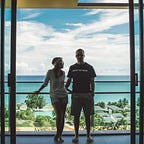SO YOU WANNA BE A PILOT?
Right now I’m in the middle of theory exam preparations, alongside the occasional flying hours in-between. I’d like to give you a bit of an idea of what it takes to get a private pilot license and what that actually means…
Different types of pilots
First of all, there are a lot of different licenses and ratings, which means a pilot isn’t just a pilot. License-wise the key ones are LAPL, PPL, CPL. That is: a light aircraft pilot license, private pilot license, and the commercial pilot license. What I’m doing is the PPL and it enables me to fly ‘proper’ small piston one-engine airplanes. Anything heavier/more complex than that basically requires additional ratings, such as for jet-engines, two engines, or even aircraft specific ratings to be allowed to fly specific models. PPL also means that I’m not allowed to charge for my flights or make any profit — I can split the actual cost with my fellow passengers, though.
Can you see?
Another important differentiation is between VFR and IFR. The first means Visual Flight Rules and the second Instrument Flight Rules. The latter is a lot more difficult and requires about double the training hours. With VFR, I basically always need to be able to steer the plane based on visual sight outside — with enough distance from clouds. This is crucial, as I cannot fully rely on instruments only, but work with both eye sight and instruments checking to ensure the aircraft flies like it’s supposed to…
What do I need to know?
The theoretical part is fairly extensive. As basics what really helps is if you paid attention during physics in high school, as well as if you know how a car engine works. If, like me, you don’t really, well — then it’s a bit more studying to be done.
Here’s a list of topics:
- Airframes and systems
- Engine
- Electrical engineering and avionics
- Instruments
- Mass and balance
- Flight performance
- Flight planning
- Human performance
- Meteorology
- Navigation
- Radio navigation
- Operational procedures
- Aerodynamics
- Communications
While going through these topics, what has consistently surprised me is how ‘manual’ many of the functions of flying still are. It starts with having a physical map in front of you, to the various instruments and their many possible errors and adjustments.
Here’s something simple: did you know that there are three different “Norths”? The geographic ‘true’ North (what you see on the map), the magnetic North, and the compass North. When looking at your heading in the plane, and referencing to a map, to a compass, and to various bearing or radio stations on the ground, quite a bit of manual work is needed to ensure you know where you are and where you go…
Is it fun?
After nearly 20 flight hours so far, and about 55 landings, I can say it’s amazing and can’t wait for my first solo flight very soon!
See more on my flight journey on our blog at www.dennislydia/category/ppl
